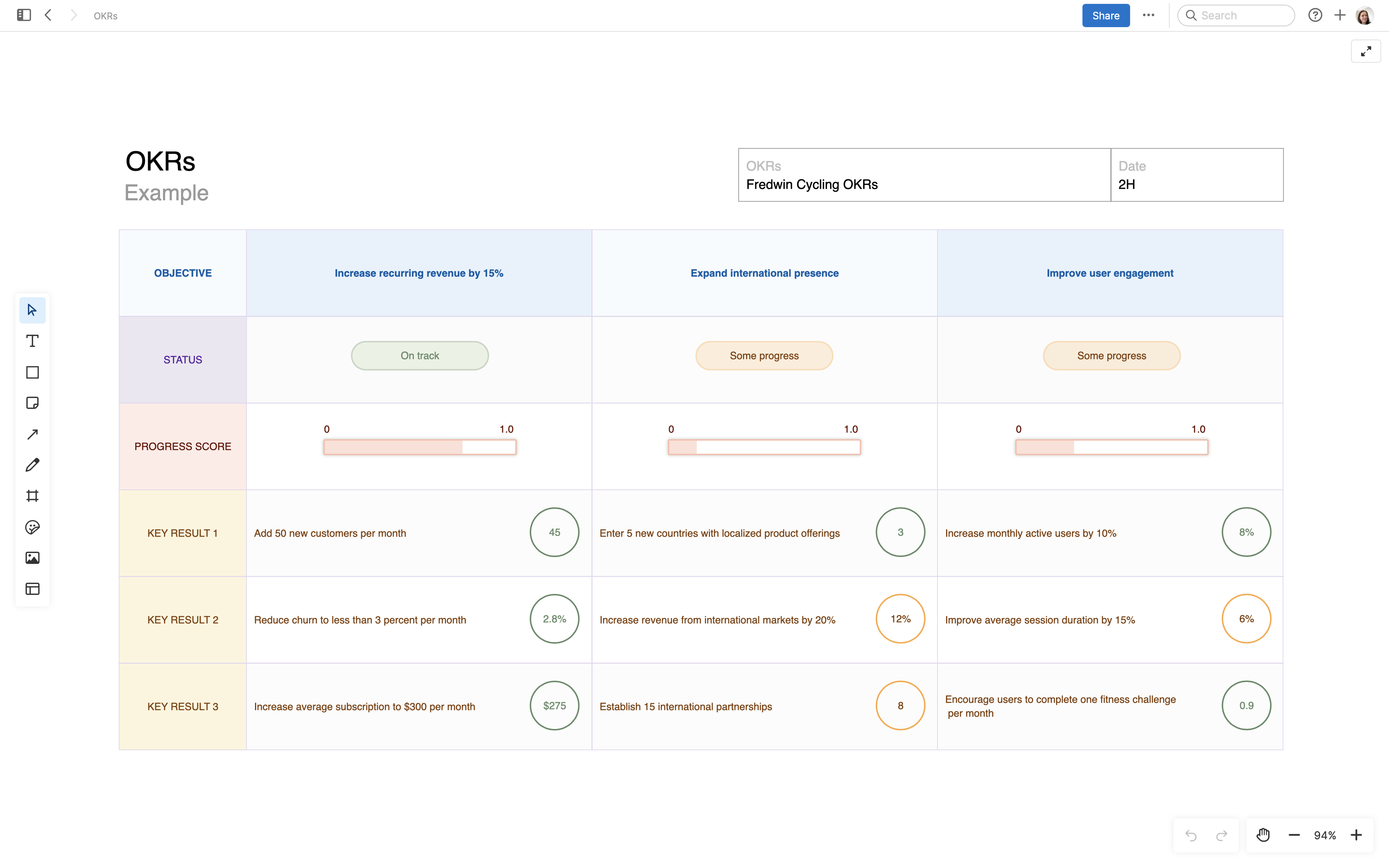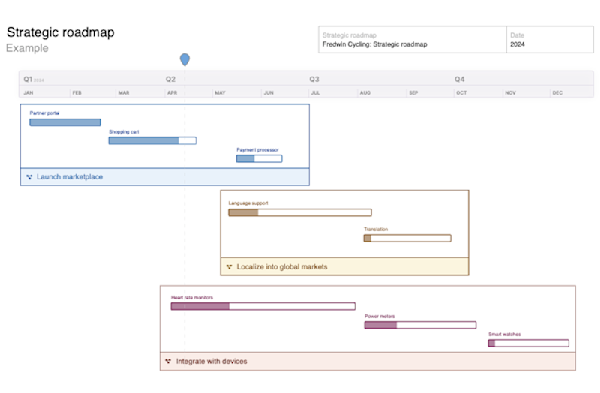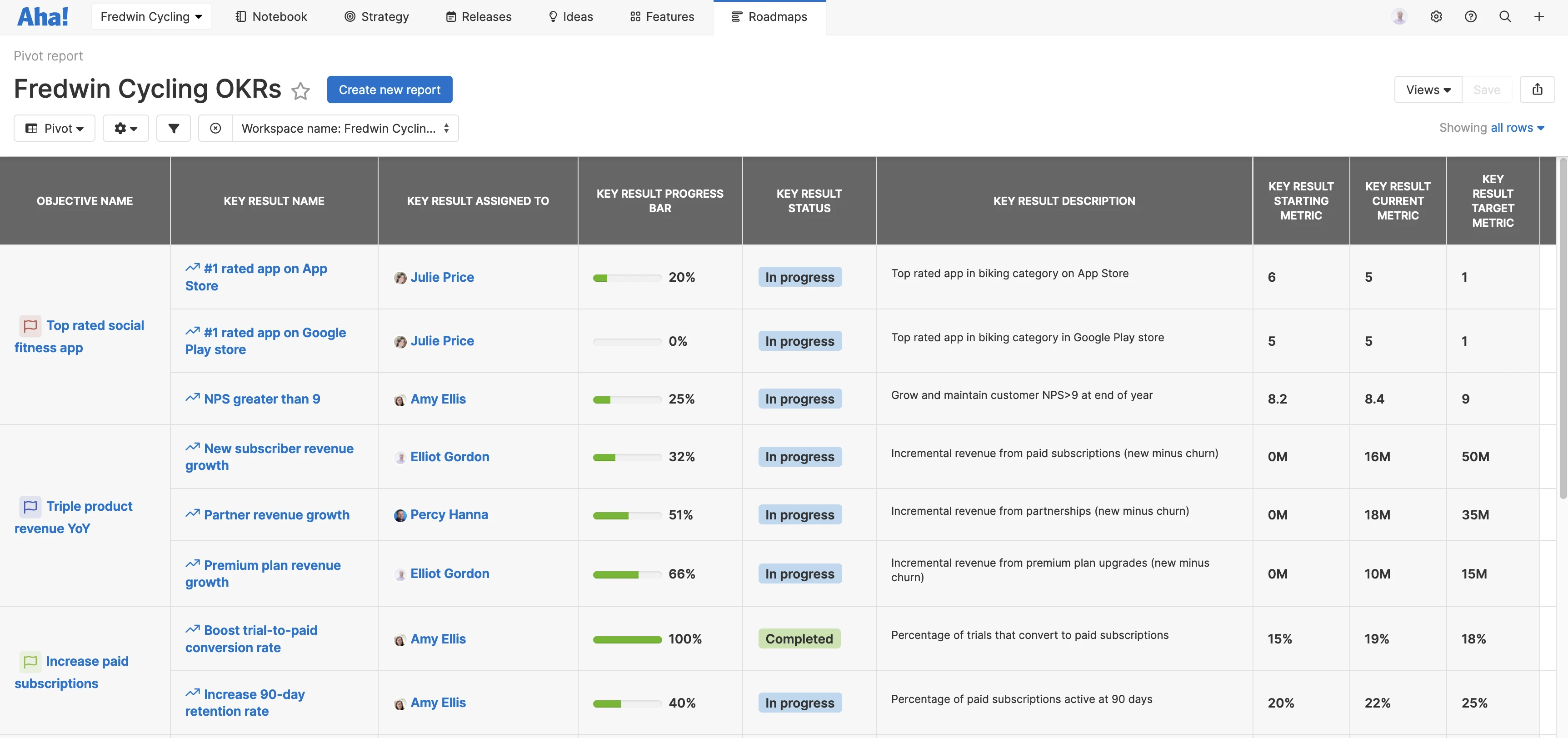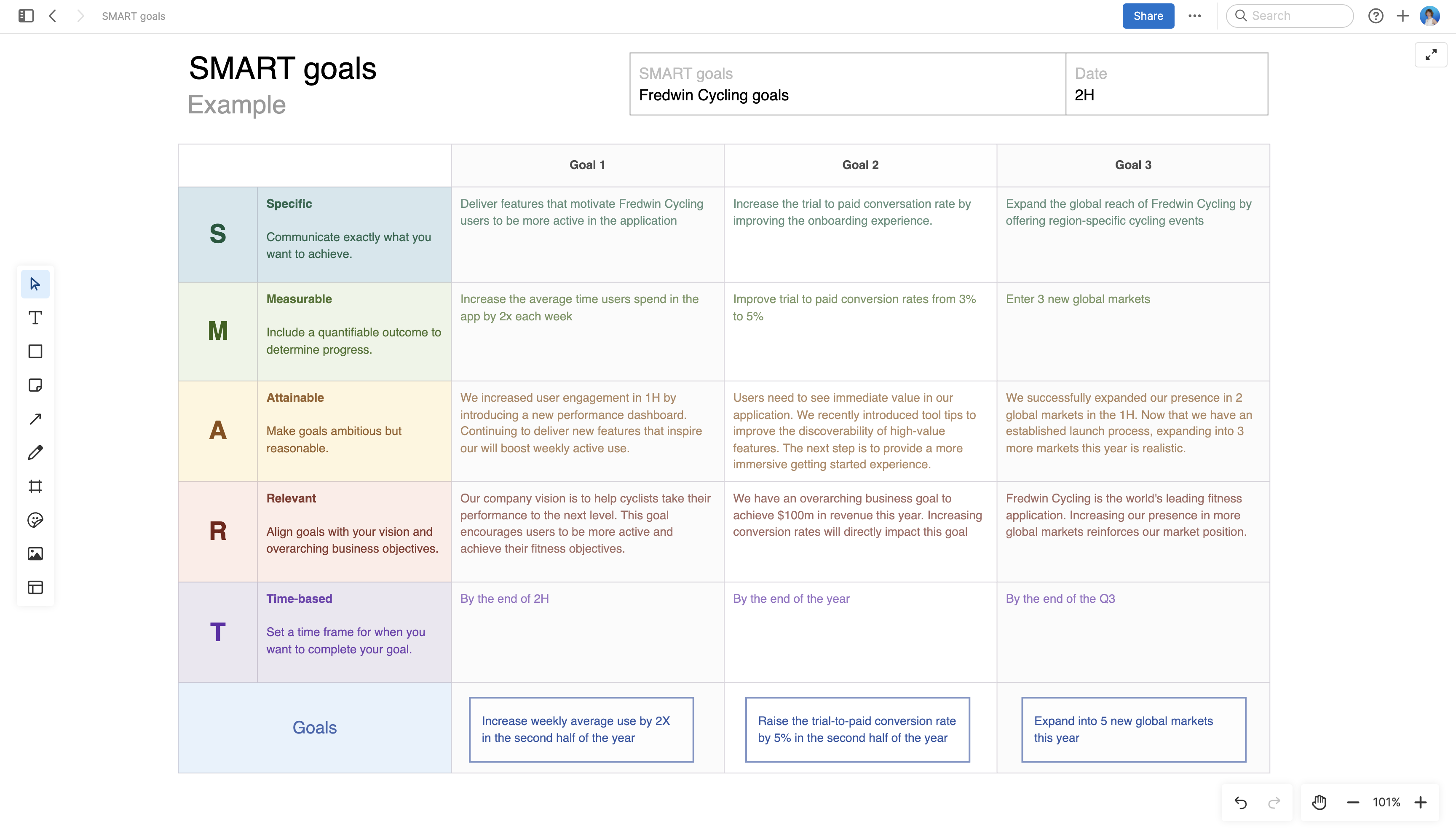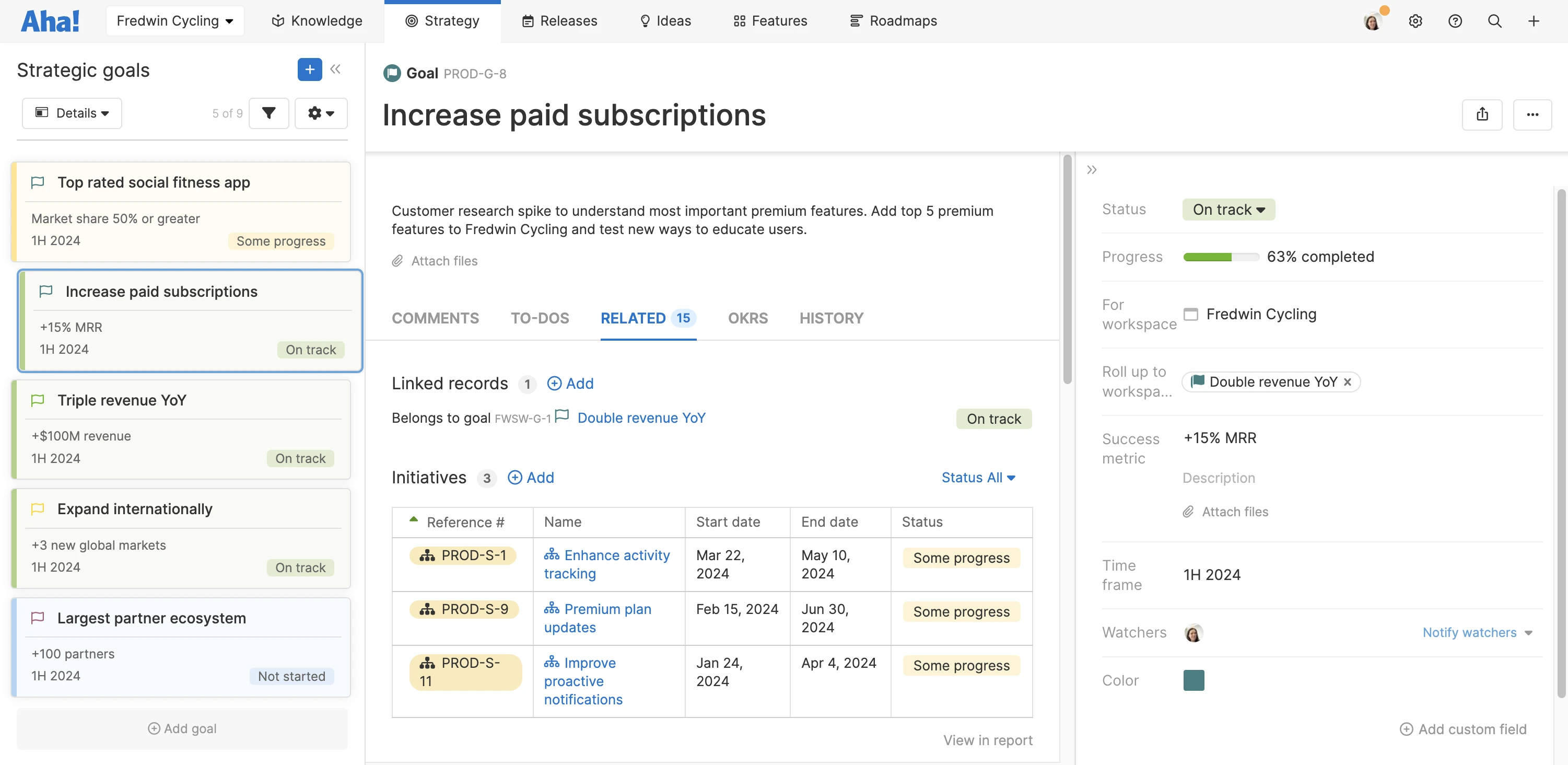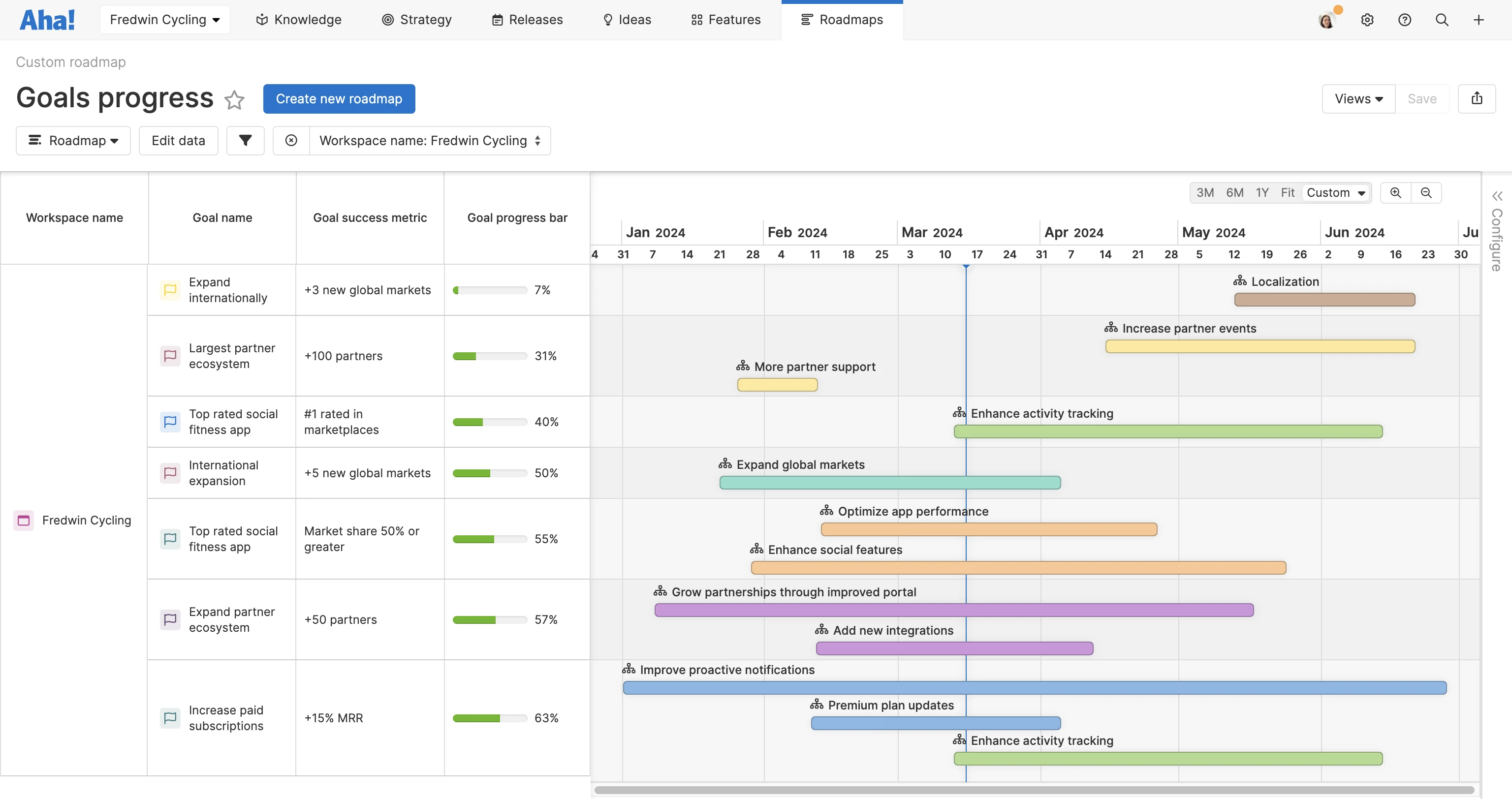How to set product goals
Create meaningful goals to guide your product strategy
Last updated: November 2025
Set measurable goals that align your product vision, guide your roadmap, and keep the team focused on what matters most. |
Goals are essential for a winning product strategy. Without them, product teams struggle to make meaningful progress. Sure, you can make your best guess as a product manager about what you believe to be the most impactful work. You might get by with savvy gut decisions in the short-term. But if you want to build towards lasting success and deliver real value to customers, you need to establish concrete goals to work towards.
What is a product goal?
A product goal is a measurable, time-bound objective that supports your product vision. It defines what you want to accomplish and how you will evaluate your success. For example, you may set a product goal to double your revenue in the next 12 months — with a success metric of $100M to consider this goal achieved. (See more examples below.)
Capture and track product goals in Aha! Roadmaps. Try for free.
Many organizations set new product goals annually, bi-annually, or quarterly. Goal-setting is a collaborative process between leadership and the product team, guided by higher-level business needs in addition to the overall product strategy. As part of this process, you will also define product initiatives — that broad themes of work you are planning to achieve each goal. After setting goals and initiatives, that is when you can start product planning and building out a roadmap.
Setting product goals takes serious thought — it requires you to have a full understanding of where you are headed and why. But it is a necessary task for any product development team that wants to build something that customers will love.
Why should you set product goals?
The products you build represent the future success of the business. Product goals are like stepping stones on that path to success. That is what makes them so important — product goals represent tangible, noteworthy achievements on the way to making your vision a reality.
Beyond this, product goals are beneficial in a number of ways:
Product goals encourage a goal-first approach. Defining product goals at the outset helps ensure they will be top-of-mind throughout product development. It is hard to avoid getting swept up in a flurry of ideas, requests, and priorities from stakeholders — but product goals will help you stay grounded in the work that matters most.
Product goals provide direction for your plans. Product goals are a link between what you want to achieve and the work you will do to achieve it. Each area of tactical investment — initiatives, epics, features, and releases — should tie back to your goals.
Product goals help with efficient prioritization. Prioritizing work is central to any product manager's role. Evaluating new ideas and features against your goals — alongside other factors like popularity, need, effort, and confidence — will help you understand what will be the most valuable to build.
Product goals rally the broader product team around the work to be done. When you have buy-in from engineering, marketing, sales, and other internal teams on your product goals, it creates a shared sense of purpose. Product goals can unite the group on important targets and help everyone see how their efforts contribute to overall success — especially when you visualize your goals on a strategic roadmap.
Related:
Examples of product goals
Product goals are specific to your business and offering. As a best practice, you should set three to five product goals for a given time period. More than that and you will likely get bogged down with tracking each one — and your plans may become muddled with too many objectives to work towards.
At a basic level, a product goal should describe:
What you want to achieve
When you want to achieve it
How you will measure if the goal was achieved (your success metric)
You can also set different types of product goals to examine your success from different angles. In the table below are a few product goal examples to help you think about how to set your own:
Type of product goal | Product goal example |
Business-driven goals Goals focused on revenue, growth strategies, hiring and development, and cost-saving process improvements. | Example product goal: Increase company revenue Time frame: 12 months Success metric: +20 percent revenue |
Market-driven goals Goals related to market awareness, perception, and virality — like expanding into a new market, outperforming competitors, or developing strategic partnerships. | Example product goal: Become a top-rated mobile app Time frame: 12 months Success metric: #1 rated in iOS and Android marketplaces |
Customer-driven goals Goals tied to customer happiness and the overall customer experience — measured by product usage, customer satisfaction, and value delivered. | Example product goal: Reduce trial time to value (TTV) Time frame: 6 months Success metric: Average trial TTV of 10 days |
What are common product goal frameworks?
Product teams often use goal-setting frameworks for consistency. Two of the most common goal frameworks — objectives and key results (OKRs) and SMART goals — can be applied to business- and product-level goals as well as team and individual goals.
Objectives and key results (OKRs) framework
With the OKR framework, you define objectives (what you want to achieve) and pair each one with three key results (how success will be measured). Compelling objectives are concise, easy to understand, and actionable — while key results should be time-bound and measurable. Together, objectives and key results form your product goals. In the image below, you can see some examples of OKRs:
An example of how you can define OKRs and track progress in Aha! Roadmaps
If you want to practice setting your own OKRs, try this OKR whiteboard template in Aha! software. This template is easily customizable and shareable — plus, it includes guidance for defining everything you want to accomplish. You can also track statuses and progress scores for each OKR.
